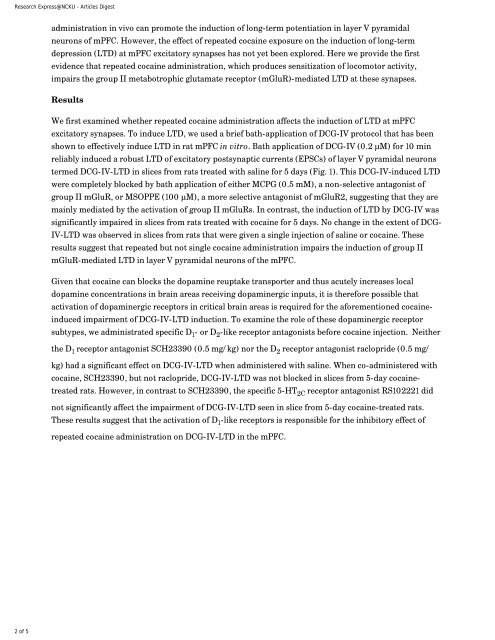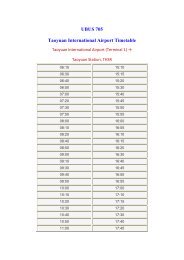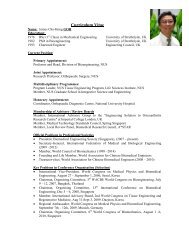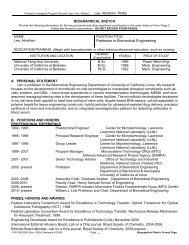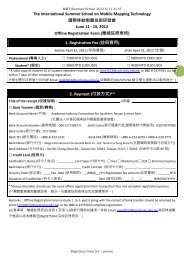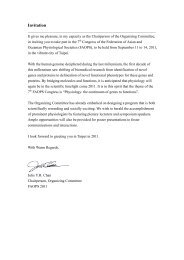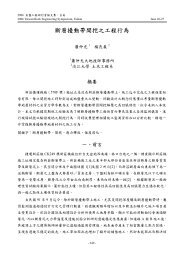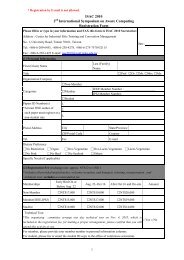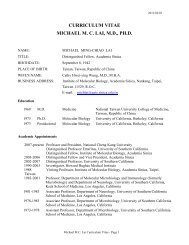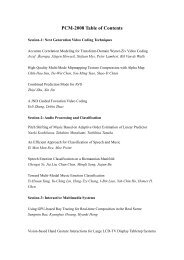Research Express@NCKU - Articles Digest
Research Express@NCKU - Articles Digest
Research Express@NCKU - Articles Digest
You also want an ePaper? Increase the reach of your titles
YUMPU automatically turns print PDFs into web optimized ePapers that Google loves.
<strong>Research</strong> <strong>Express@NCKU</strong> - <strong>Articles</strong> <strong>Digest</strong>administration in vivo can promote the induction of long-term potentiation in layer V pyramidalneurons of mPFC. However, the effect of repeated cocaine exposure on the induction of long-termdepression (LTD) at mPFC excitatory synapses has not yet been explored. Here we provide the firstevidence that repeated cocaine administration, which produces sensitization of locomotor activity,impairs the group II metabotrophic glutamate receptor (mGluR)-mediated LTD at these synapses.ResultsWe first examined whether repeated cocaine administration affects the induction of LTD at mPFCexcitatory synapses. To induce LTD, we used a brief bath-application of DCG-IV protocol that has beenshown to effectively induce LTD in rat mPFC in vitro. Bath application of DCG-IV (0.2 μM) for 10 minreliably induced a robust LTD of excitatory postsynaptic currents (EPSCs) of layer V pyramidal neuronstermed DCG-IV-LTD in slices from rats treated with saline for 5 days (Fig. 1). This DCG-IV-induced LTDwere completely blocked by bath application of either MCPG (0.5 mM), a non-selective antagonist ofgroup II mGluR, or MSOPPE (100 μM), a more selective antagonist of mGluR2, suggesting that they aremainly mediated by the activation of group II mGluRs. In contrast, the induction of LTD by DCG-IV wassignificantly impaired in slices from rats treated with cocaine for 5 days. No change in the extent of DCG-IV-LTD was observed in slices from rats that were given a single injection of saline or cocaine. Theseresults suggest that repeated but not single cocaine administration impairs the induction of group IImGluR-mediated LTD in layer V pyramidal neurons of the mPFC.Given that cocaine can blocks the dopamine reuptake transporter and thus acutely increases localdopamine concentrations in brain areas receiving dopaminergic inputs, it is therefore possible thatactivation of dopaminergic receptors in critical brain areas is required for the aforementioned cocaineinducedimpairment of DCG-IV-LTD induction. To examine the role of these dopaminergic receptorsubtypes, we administrated specific D 1 - or D 2 -like receptor antagonists before cocaine injection. Neitherthe D 1 receptor antagonist SCH23390 (0.5 mg/kg) nor the D 2 receptor antagonist raclopride (0.5 mg/kg) had a significant effect on DCG-IV-LTD when administered with saline. When co-administered withcocaine, SCH23390, but not raclopride, DCG-IV-LTD was not blocked in slices from 5-day cocainetreatedrats. However, in contrast to SCH23390, the specific 5-HT 2C receptor antagonist RS102221 didnot significantly affect the impairment of DCG-IV-LTD seen in slice from 5-day cocaine-treated rats.These results suggest that the activation of D 1 -like receptors is responsible for the inhibitory effect ofrepeated cocaine administration on DCG-IV-LTD in the mPFC.2 of 5


